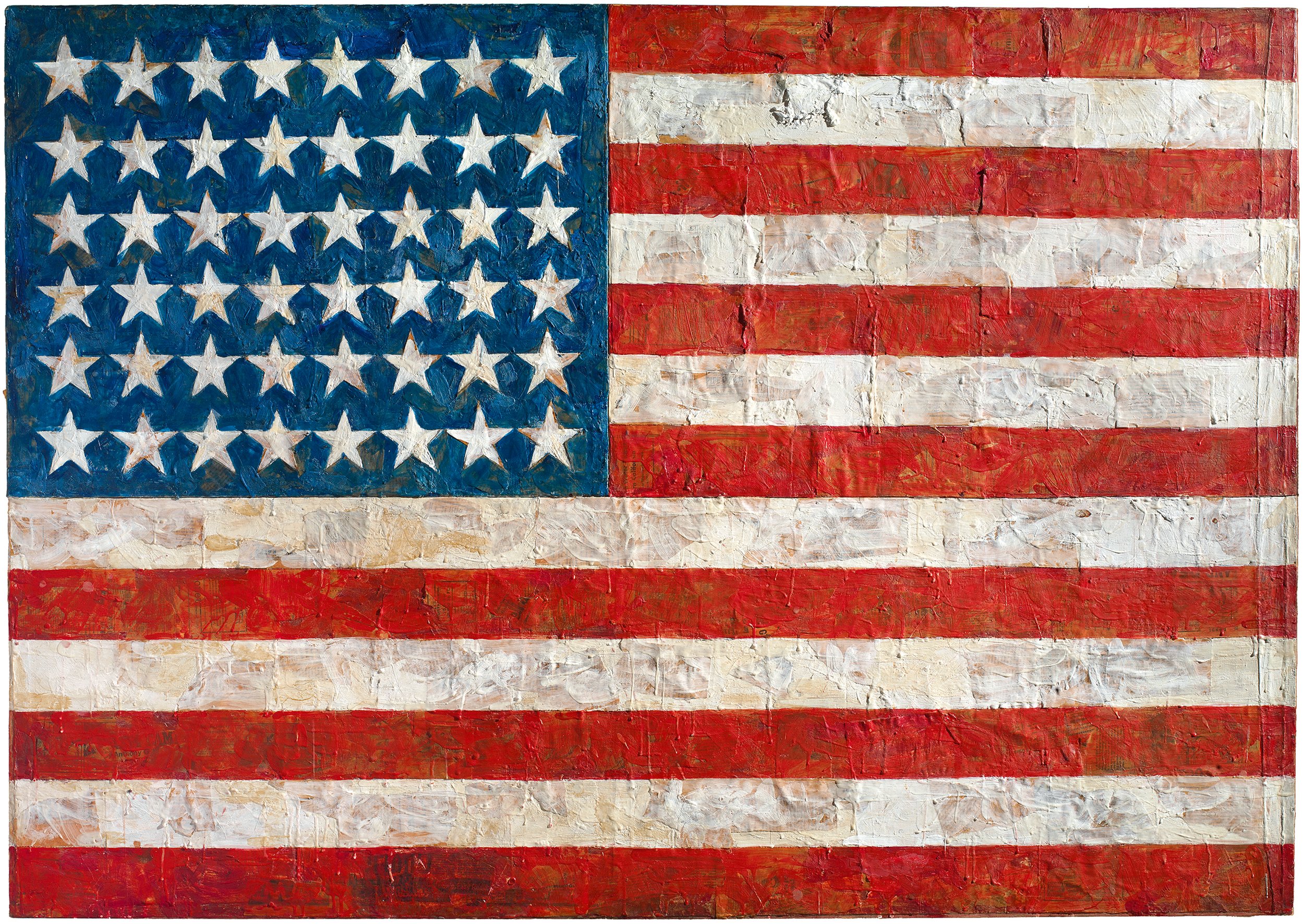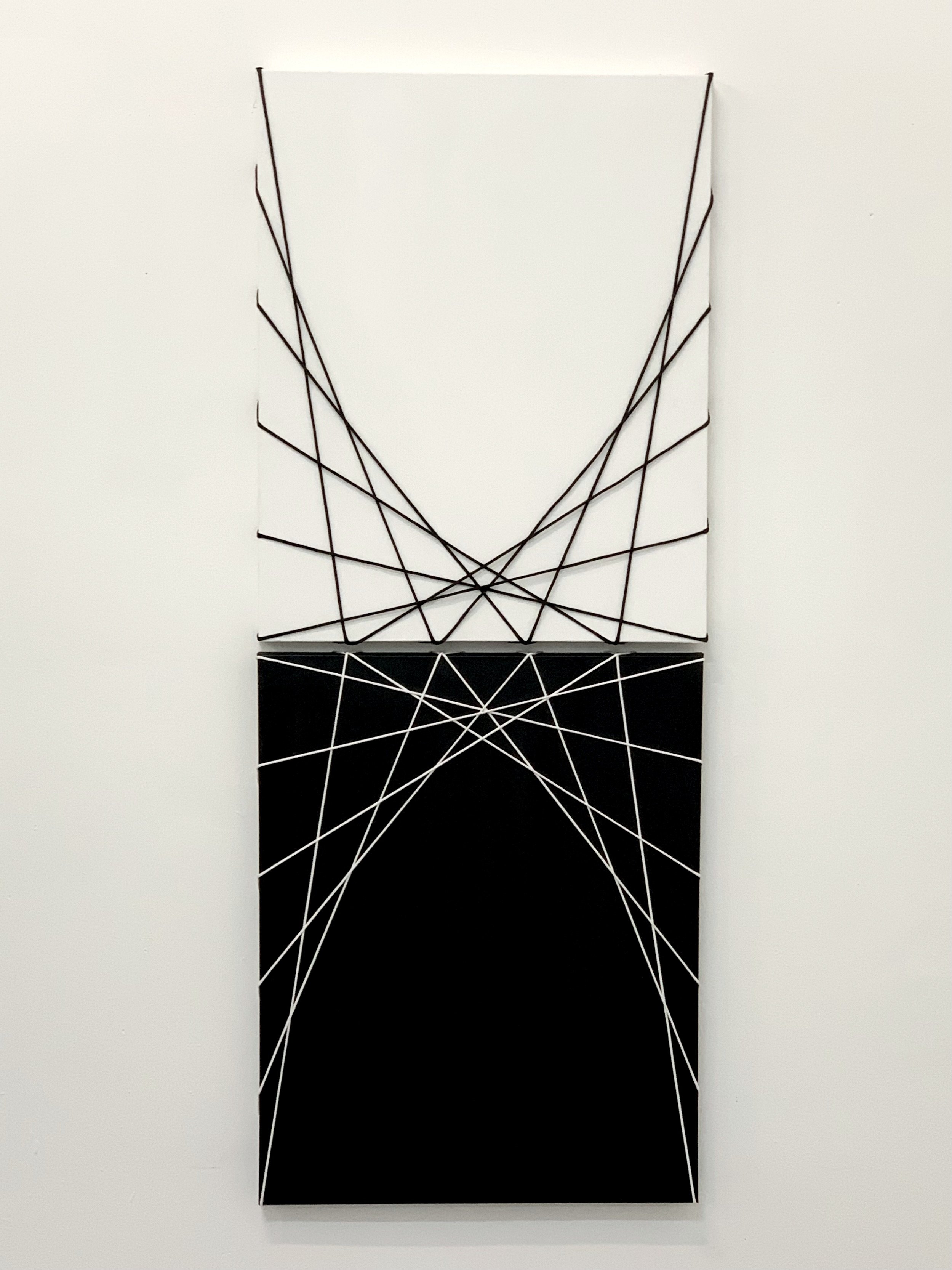Thingly Affinities: On the Strange Power of Visual Form

By Taney Roniger
Across the road at the bottom of my driveway, half sunken behind a small slope and a thicket of weeds, there is a dead tree. No taller than two men and naked and spindly, there ought to be nothing remarkable about it. Indeed, there would be nothing remarkable about it were it not for one thing: by some conspiracy of forces that strains the imagination, one of its branches, wrested from the trunk by some celestial hand, hangs precariously from the fork of another, its overturned arm cutting diagonally across the vertical thrust of its neighbors. A quiet paean to gravity and matter’s protest against it, it has stood thus for sixteen years. While there are people for whom such things go unnoticed, this odd little corpse has commanded my gaze every time I have passed it. Drawing me to it as if by some strange magnetism, it holds my eye until it can’t anymore, and each time, without fail, I am utterly transfixed.
As artists, we are particularly attuned to the visible world. We notice, we attend; as it is said, we bear witness. But not everything we see elicits a strong response. How many things meet our eyes each day as but fleeting blips in our awareness? What’s curious to me about this tree is how much it moves me – and that it can, at times, even seem to change me. Often, as I watch it receding in the rearview, I lose myself for a minute and only later retrieve my thoughts. When my thoughts return, they are not the same thoughts; it’s as if they’ve been turned somehow, somehow rendered softer. How can a piece of inert matter have such an effect? How, indeed, can it cast such a spell?
The rational mind, of course, does not take kindly to spells. Eager to extinguish this one, it rushes for sensible explanations: All dead things, it might venture, send us into reflection, their existence a reminder of what we would all rather forget. Or perhaps it’s the sheer improbability: the uncanny precision with which the branch landed and its equally uncanny, phoenix-like persistence. Or perhaps the tree reminds me of one I loved as a child. But I’m inclined to accept none of these. What I’ve come to believe is that the depth of my response derives not from anything the tree represents, but rather from the structure created by its interwoven branches. It is a physical response, in other words, to its form. I say this with confidence for one reason alone: the texture of the feeling my tree gives me is identical to the kind I have on a prized day in my studio—a day when the forms over which I’ve been laboring emerge from incoherence and achieve, often suddenly, a resolute rightness.
*
The power of form is one of art’s great enigmas. How is it that we can be perfectly indifferent to two shapes sitting side by side but aesthetically roused when one is nudged slightly upward? This arousal, this internal shudder, being something we feel rather than think, the faculty of reason is of no help to us here (as artists know all too well, language tends to founder every time we’re called upon to deploy it). All we can say is that when the visual resonances we perceive have this quality of rightness, we feel a deep satisfaction unlike any other. For me, the feeling is a flickering wave that moves through my body, settling in my consciousness as a kind of inner expansion.
This rightness of which we speak need not be about balance. Nor is it necessarily about beauty, or elegance. Sometimes it can happen when there’s just the right kind of awkwardness, or when the tensions between elements set them on the verge of collapse, or when a cascade of shapes sends the whole into chaos. Sometimes a composition achieves just the right kind of ugliness. To labor over form is to search for this rightness, and if it eludes me for too long I am anxious and irritated. Or, worse, I feel nothing at all.
Of course like all subjective experiences, rightnesses differ; what induces it for me may not do so for you. To you my tree might be a weed blocking your sun, and a tree you find spectacular may leave me cold. But what is certain is that we all know the feeling – even, though probably to a lesser degree, those who are not artists. For each of us there is a zone within which visual things stir us and seem to lock us in a kind of visceral trance. And for many of us, this experience can be profound. How to account for the strange power of form?
*
In physics, two oscillators placed on a shared substrate will, given sufficient time, begin to oscillate at the same frequency. There’s nothing spooky about this; the synchronizing occurs because each emits small vibrations that get transferred one to the other until, seeking the least possible resistance, they “phase-lock” into the same rhythm. It’s a phenomenon known as entrainment, and it occurs in biological systems as well. In many subtle and not so subtle ways, we ourselves do it all the time: when engaged in conversation, we tend to adopt the speech patterns of our interlocutors, and – like many other animals – our sleep/wake cycles are tuned to the Earth’s daily rotation. And then there is music: few are those who can resist tapping or swaying in the presence of some particularly infectious rhythm. For we too are oscillators: our bodies are constantly pulsating to rhythms and cycles not under the control of our conscious awareness. The world is abuzz with animate forces, and we are among its many transmitters and receivers.
Could something of the kind happen with visual form? On the face of it, this does sound a bit spooky. For what sets vision apart from the other senses is that it operates across distances. I can be moved by the contour of a mountain I see from miles away, but neither the torques and tensions of its rocky mass nor the vibratory dance of the particles inside it reach my body in any physical way. Nevertheless, there is a very real sense in which the mountain does reach me. What reaches me – what in fact penetrates me deeply – is the presence of its form: the soft slope of its curve as it pushes up the sky and the tiny rivulets of light and shadow that shimmer across its surface. The image I see penetrates me because it is happening inside me; it is a physical response of my organism to the raw data of my senses. And it is a happening that I experience not in some isolated mind-chamber but rather with my entire body. I see the slope of the curve and my body reenacts it. I see the rivulets of light and shadow and they shimmer through me. Like deep visceral echoes, our images are secretions born of our visual contact with things. But our mental images are not entirely ours; without the thingly presences that give rise to them, they wouldn’t exist inside us. In this sense, seeing is a profoundly collaborative act – one in which the world offers itself to us and we in response reiterate its form.
It is also, if we see deeply enough, an act of empathy. For we don’t see just with our bodies but with our whole selves, with the inseparable cohort of our senses, emotions, memories, and imagination. To see something deeply is to draw ever closer toward it. First, it’s the eyes: Sweeping over the form’s surface, examining its different facets, your gaze seems to touch the thing, to be running a finger along its contours. Then, if you keep looking, you begin to feel the thing in your muscles: the distribution of its weight, how it sits in space, its various tensions and contractions. You feel the atmosphere around it, you feel its “mood.” Eventually, the emotional tenor of its presence permeates yours. By way of this kind of corporeal empathy, you are just as much inside the thing as it is inside you. If we and what we see are so deeply interconnected, is this not itself a form of entrainment?
*
Thingly forms affect us. Our rhythms synchronize with theirs, our tensions with their tensions. But only some grant us access to that rightness. For the forces that animate other things might not agree with our own; we might even find ourselves falling into lockstep with a thing we can’t stand, such as the slick videography of a television commercial, or the barrage of lights on a Times Square billboard. Moreover, something that induces the rightness for us once might not do it for us again. As artists, we know all too well that singular disappointment when the thing that sends you into rapture on Monday barely nods in your direction when you meet it again on Tuesday. Rightness is fickle, shifty, a little deceitful. But then, if all bodies and things are always moving and changing, everything throbbing and pulsating with the animacy of the universe, this capriciousness should not be so surprising. The real question is why, when it does so, this visceral enthrallment feels so satisfying.
If the feeling in question is a particularly powerful form of empathy, perhaps it is this moving out of ourselves that is the source of its power. For not only do we move out into the thing whose form so stirs us, but we also take leave of our ordinary, discursive consciousness: all our thinking and planning and worrying and remembering – in short, the whole panoply of thought-events that like to masquerade as “I.” Rightness is a silent place, void of language, void of thought. It is a place where, temporarily relieved of the chatty and imperious ego, we return to the deeper intelligence of the body. We feel the vitality of that intelligence as it pulses through our veins, reawakening the deeper dimensions of our consciousness that have been buried beneath our words. Coming back to ourselves as sensory, incarnate beings, we experience somatically something the conscious mind forgets: that although our intellect may seem to, it has never severed our continuity with the rest of the material world. We are embedded in matter, and it is embedded in us. Or, rather, we are matter. It should be little wonder, then, that the rightness of form feels so right: essentially a kind of corrective re-membering, it is a means by which we rejoin the larger matrix of the world. That our word “matter” comes from “mother” is no coincidence.
*
As entropy will have it, the day will come when the branch of my tree finally succumbs to gravity and topples to the earth. I imagine myself descending the driveway on some early spring day. The crisp air rustling newborn leaves under a low white sky, I reach the clearing near the road where the magnetism begins to call. Something is amiss. There is a hole in the world. My eyes scan the field, searching for the wound. And now there it is: where once stood a thing of exquisite perfection, a thing so right in its form it could silence a scourge, there is now a barren, gangly, lifeless little tree. I’m crestfallen. But then I begin to think of the others: the larger trees just up the hill, the weeds, the cows, the songbirds. I imagine a collective swerve, a little ripple through the field, as all of us in unison adjust to the new arrangement. I drive on, silent. I go do what it is I have to do, pass the tree once more, and return to my studio to move a line leftward.




